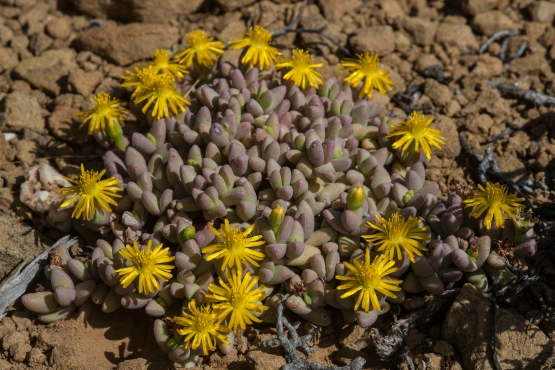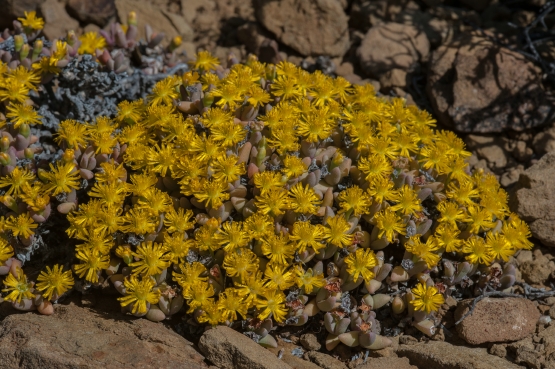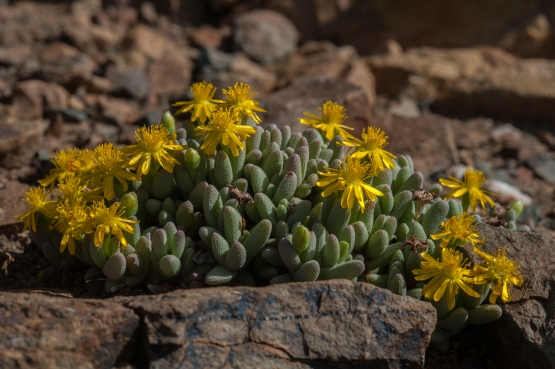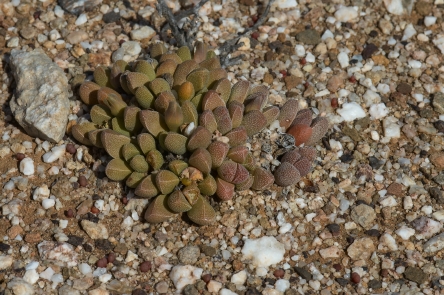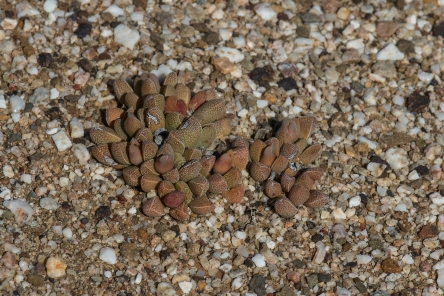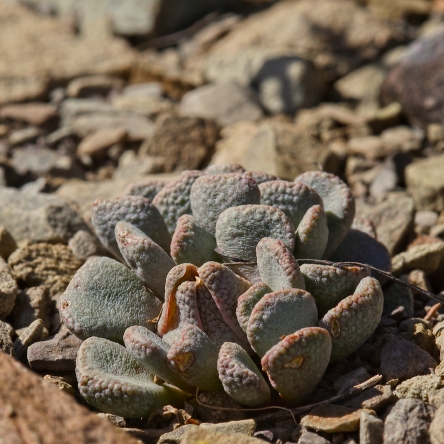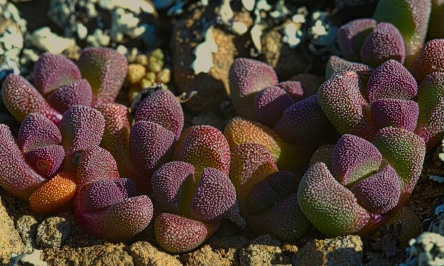Here is an example of how knowing the meaning of the name actually may help to recognise the species. (Rhinephyllum = leaf like a file, referring to the rough surface of the leaves; graniforme = shaped like a grain). The genus occurs from Laingsburg in the Western Cape northeastwards to the southern tip of the Free State.
The flowers are rather special in the sense that they open only late in the afternoon or in the evening.
Photographed east of Prince Albert 3 Nov. 2012.
Tag: Rhinephyllum
Rhinephyllum muirii
Warts and all
In a recent post (Cover up, 14th Jan.) I discussed how spines, hairs etc. help succulents conserve water. In some families we also come across plants where the leaves are (partly) covered in warts, papillae or tubercles. Although these are often highly decorative, it seemed likely to me that they would first and foremost serve a useful purpose. After doing a bit of research I came up with some interesting information.
It appears that the presence of these projections on stems or leaves has an advantage for the plants in that the breathing pores are hidden in the lower areas between them. This diminishes transpiration and protects the plants from dehydration.
In the case of warts, there is an additional advantage: their epidermis is rich in crystals and lies over cells that store up tannin. This combination makes the plant rather unattractive to herbivores.
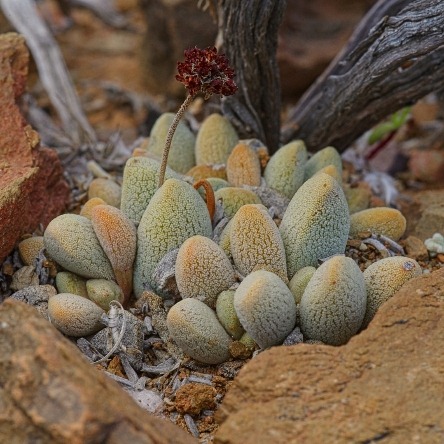
Crassula tecta is named after the warts on the leaves (tecta =covered or protected)
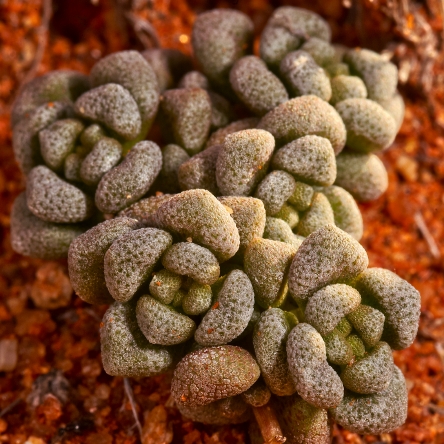
Crassula corallina v. macrorrhiza (corallina = coral-like)
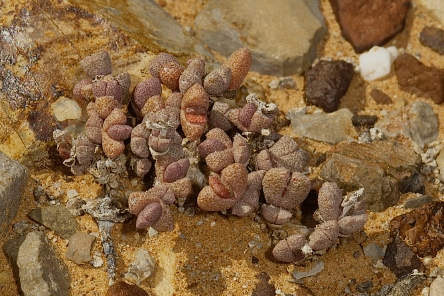
In Rhinephyllum graniforme the genus name means file leaf
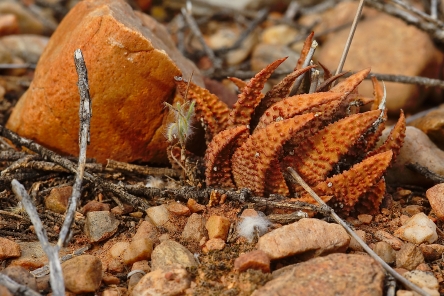
Haworthia scabra is aptly named too (scabra = rough)
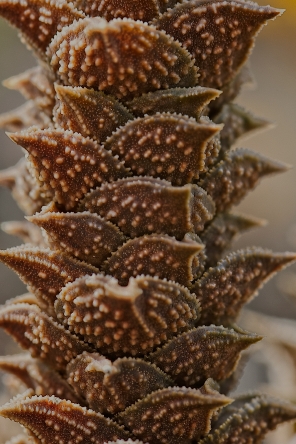
This Astroloba used to be called A. aspera (=rough). The current name A. corrugata has a similar meaning (wrinkled or furrowed)
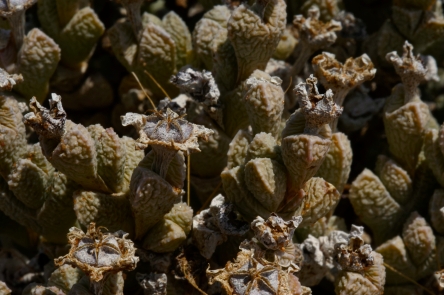
Ruschia muricata is rough to the touch and that is exactly what muricata means
In the following two species the names make no reference to things like warts or tubercles, but it is clear that this is not because of lack of these.
